the map is not the territory
description: a phrase emphasizing that models or representations of reality are not the same as the reality they represent
40 results

The Great Mental Models: General Thinking Concepts
by
Shane Parrish
Published 22 Nov 2019
The goal of FS is to master the best of what other people have figured out. True to this mission, everything in here began with someone else. Any reproduction of this book requires written permission. www.fs.blog ISBN: 978-1-9994490-0-1 Contents Preface Acquiring Wisdom General Thinking Concepts: The Map is not the Territory Circle of Competence First Principles Thinking Thought Experiment Second-Order Thinking Probabilistic Thinking Inversion Occam’s Razor Hanlon’s Razor Supporting Ideas: Falsifiability Necessity and Sufficiency Causation vs. Correlation Acknowledgements Landmarks Title Page Table of Contents Preface Introduction Body Matter Acknowledgments Cover _ The key to better understanding the world is to build a latticework of mental models.
…
Also known as the “Lady Photographer”, she was an artist who lived and worked in Lebanon and Palestine. Jacobs, Jane. 1916-2006 - American-Canadian journalist, author, and activist who influenced urban studies, sociology, and economics. Her work has greatly impacted the development of North American cities. The Map is not the Territory The map of reality is not reality. Even the best maps are imperfect. That’s because they are reductions of what they represent. If a map were to represent the territory with perfect fidelity, it would no longer be a reduction and thus would no longer be useful to us. A map can also be a snapshot of a point in time, representing something that no longer exists.
…
Key elements of a map In 1931, the mathematician Alfred Korzybski presented a paper on mathematical semantics in New Orleans, Louisiana. Looking at it today, most of the paper reads like a complex, technical argument on the relationship of mathematics to human language, and of both to physical reality. However, with this paper Korzybski introduced and popularized the concept that the map is not the territory. In other words, the description of the thing is not the thing itself. The model is not reality. The abstraction is not the abstracted. Specifically, in his own words:2 1. A map may have a structure similar or dissimilar to the structure of the territory. The London underground map is super useful to travelers.
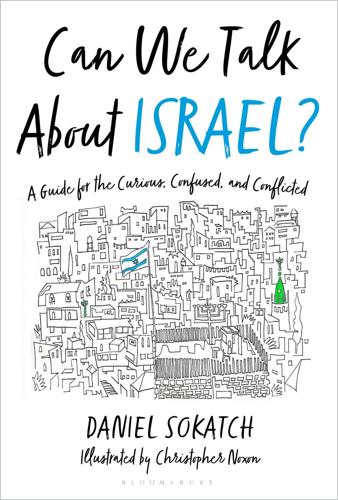
Can We Talk About Israel?: A Guide for the Curious, Confused, and Conflicted
by
Daniel Sokatch
Published 18 Oct 2021
4.The British Are Coming: World War I, the Balfour Declaration, and the Establishment of the British Mandate (1917–39) 5.Israel and the Nakba: Independence and Catastrophe (1947–49) 6.The Dispossessed 7.The Fifties: State Building and Suez 8.The Big Bang: The 1967 War and the Reality It Created 9.Roller Coaster: From the Yom Kippur War to the First Intifada (1968–87) 10.Shaking It Off: The First Intifada 11.Israel Is Waiting for Rabin 12.As the Clever Hopes Expire: The End of Oslo 13.The Bulldozer’s Last Surprise 14.The Democracy Recession PART TWO: WHY IS IT SO HARD TO TALK ABOUT ISRAEL? 15.The Map Is Not the Territory 16.Israel’s Arab Citizens: Shared Society or Segregation? 17.A Love Story? Israel and the American Jewish Community 18.The Settlements 19.What We Talk About When We Talk About BDS 20.The A-Word 21.The Other A-Word 22.Red Cows in the Heartland: Israel and Armageddon 23.The Case for Hope A Lexicon of the Conflict Acknowledgments Bibliography Notes INTRODUCTION HAVE YOU EVER found yourself at a dinner party when the topic of Israel came up, and you wanted to flee to another room?
…
Why are there so many land mines when it comes to talking about, and criticizing, Israel and its policies? And what’s the evangelical Christian obsession with Israel all about? Once we’ve unpacked these (and a few other) questions a bit, we may have a better sense of why they can drive so many otherwise sensible people a little bonkers. CHAPTER 15 THE MAP IS NOT THE TERRITORY IN THE LATE 1990s, I decided to photograph road and street signs in Israel (mostly in Jerusalem) that had been altered or vandalized, almost always to excise the Arabic place names from the bi- or trilingual signs. There were hundreds of examples. In the pictures, you can see the Arabic place names blacked out with paint or covered over by ultranationalist Hebrew-language bumper stickers.
…
Generations of Palestinian and Israeli kids grow up with maps that tell them that they are the sole rightful owners of the land. And when those deeply rooted perceptions and assumptions don’t match reality, look out. That’s a key ingredient in the recipe for another generation of conflict and hatred. When it comes to this contested region, the map is not the territory. Archaeology, too, is a conflict zone. Despite the fact that there is an abundance of actual historical and archaeological evidence clearly supporting the connections of both Jews and Palestinians to the land, a lot has been invested in not only establishing the best and most compelling historical claim, but also denying the connection of the “other.”
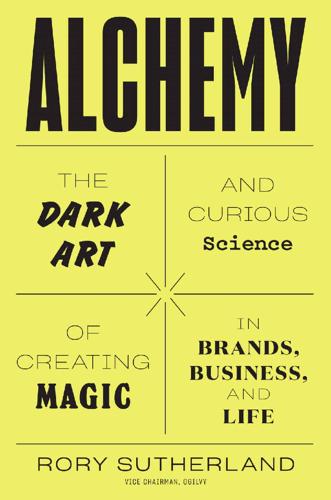
Alchemy: The Dark Art and Curious Science of Creating Magic in Brands, Business, and Life
by
Rory Sutherland
Published 6 May 2019
‘It doesn’t matter what something tastes like in blind tastings, if you put “low in fat” or any other health indicators on the packaging, you’ll make the contents taste worse.’ In the testing that they had conducted the biscuits had been unpackaged, and they had forgetten that packaging will also affect the taste. 6.8: The Map Is Not the Territory, but the Packaging Is the Product The Polish-American academic Alfred Korzybski (1879–1950) is perhaps most famous for his dictum that ‘The map is not the territory.’ He created a field called general semantics, and argued that because human knowledge of the world is limited by human biology, the nervous system and the languages humans have developed, no one can perceive reality, given that everything we know arrived filtered by the brain’s own interpretation of it.
…
6.2: How to Buy a Television for Your Pet Monkey 6.3: Lost and Gained in Translation: Reality and Perception as Two Different Languages 6.4: Mokusatsu: The A-Bomb, the H-Bomb and the C-Bomb 6.5: Nothing New under the Sun 6.6: When It Pays to Be Objective – and When It Doesn’t 6.7: How Words Change the Taste of Biscuits 6.8: The Map Is Not the Territory, but the Packaging Is the Product 6.9: The Focusing Illusion 6.10: Bias, Illusion and Survival 6.11: How to Get a New Car for £50 6.12: Psychophysics to Save the World 6.13: The Ikea Effect: Why It Doesn’t Pay to Make Things Too Easy 6.14: Getting People to Do the Right Thing Sometimes Means Giving Them the Wrong Reason 7: How to Be an Alchemist 7.1: The Bad News and the Good News 7.2: Alchemy Lesson One: Given Enough Material to Work On, People Often Try to Be Optimistic 7.3: Sour Grapes, Sweet Lemons and Minimising Regret 7.4: Alchemy Lesson Two: What Works at a Small Scale Works at a Large Scale 7.5: Alchemy Lesson Three: Find Different Expressions for the Same Thing 7.6: Alchemy Lesson Four: Create Gratuitous Choices 7.7: Alchemy Lesson Five: Be Unpredictable 7.8: Alchemy Lesson Six: Dare to Be Trivial 7.9: Alchemy Lesson Seven: In Defence of Trivia Conclusion: On Being a Little Less Logical Solving Problems Using Rationality Is Like Playing Golf With Only One Club Finding the Real Why: We Need to Talk about Unconscious Motivations Rebel against the Arithmocracy Always Remember to Scent the Soap Back to the Galapagos Endnotes About the Author Copyright About the Publisher Rory’s Rules of Alchemy The opposite of a good idea can also be a good idea.
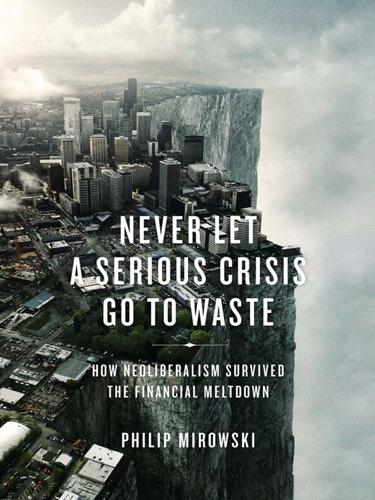
Never Let a Serious Crisis Go to Waste: How Neoliberalism Survived the Financial Meltdown
by
Philip Mirowski
Published 24 Jun 2013
“Academics Have More to Declare than Their Genius,” Financial Times, June 24, 2009. Kates, Steven. The Global Financial Crisis: What Have We Learnt? (Cheltenham, U.K.: Elgar, 2011). Kay, John. “Economics: Rituals of Rigor,” Financial Times, August 25, 2011. Kay, John. “The Map Is Not the Territory,” October 4, 2011, at www.johnkay.com/2011/10/04/the-map-is-not-the-territory-an-essay-on-the-state-of-economics. Kay, John. “Why Economists Stubbornly Stick to their Guns,” Financial Times, April 15, 2011. Keen, Steve. “Like a Dog Walking on Its Hind Legs: Krugman’s Minsky Model,” March 4, 2011, at www.debunkingeconomics.com.
…
Just when I had begun feeling proud of my little trope, a friend pointed me to Wendy Brown’s “American Nightmare: Neoliberalism, Neoconservatism, and De-democratization.” Originality is an overrated virtue. 2 Video recordings of much of the proceedings are available on the Web at www.ineteconomics.org. 3 Kay, “The Map Is Not the Territory.” 4 Tankersley and Hirsh, “Neo–Voodoo Economics.” 5 Tiago Mata, at History of Economics Playground, at http://historyofeconomics.wordpress.com/2011/04/10/inet-bw-of-history-repeating/#more-2002. 6 Stephan Richter, www.theglobalist.com/storyid.aspx?StoryId=9096. See also the account by Yves Smith at www.nakedcapitalism.com/2011/04/page/3, which suggests that the video available at the INET website may have been redacted.
…
For a number of examples on the right, see the Chicago interviews of John Cassidy (“Rational Irrationality”) or Taylor, “How Government Created the Financial Crisis.” History is always the first casualty in any economics dispute. 6 See www.britac.ac.uk/events/archive/forum-economy.cfm. The Queen’s question is also discussed in Kay, “The Map Is Not the Territory.” 7 See, for instance, Jane Smiley’s novel Moo, or Olivier Assayas’s film Summer Hours. 8 Sorman, “The Free Marketers Strike Back.” 9 Thoma, “What Caused the Financial Crisis?” 10 Here is the economist David Levine: “I was reading your article ‘How Did Economists Get It So Wrong.’ Who are these economists who got it so wrong?

Rationality: From AI to Zombies
by
Eliezer Yudkowsky
Published 11 Mar 2015
But your true understanding is measured by your ability to describe what you’re doing and why, without using that word or any of its synonyms. * 169 Fallacies of Compression “The map is not the territory,” as the saying goes. The only life-size, atomically detailed, 100% accurate map of California is California. But California has important regularities, such as the shape of its highways, that can be described using vastly less information—not to mention vastly less physical material—than it would take to describe every atom within the state borders. Hence the other saying: “The map is not the territory, but you can’t fold up the territory and put it in your glove compartment.” A paper map of California, at a scale of 10 kilometers to 1 centimeter (a million to one), doesn’t have room to show the distinct position of two fallen leaves lying a centimeter apart on the sidewalk.
…
So is the 747 made of something other than quarks? No, you’re just modeling it with representational elements that do not have a one-to-one correspondence with the quarks of the 747. The map is not the territory. Why not model the 747 with a chromodynamic representation? Because then it would take a gazillion years to get any answers out of the model. Also we could not store the model on all the memory on all the computers in the world, as of 2008. As the saying goes, “The map is not the territory, but you can’t fold up the territory and put it in your glove compartment.” Sometimes you need a smaller map to fit in a more cramped glove compartment—but this does not change the territory.
…
Given the seeming absolute stability and universality of physical laws, it’s possible that never, in the whole history of the universe, has any particle exceeded the local lightspeed limit. That is, the lightspeed limit may be, not just true 99% of the time, or 99.9999% of the time, or (1 - 1/googolplex) of the time, but simply always and absolutely true. But whether we can ever have absolute confidence in the lightspeed limit is a whole ’nother question. The map is not the territory. It may be entirely and wholly true that a student plagiarized their assignment, but whether you have any knowledge of this fact at all—let alone absolute confidence in the belief—is a separate issue. If you flip a coin and then don’t look at it, it may be completely true that the coin is showing heads, and you may be completely unsure of whether the coin is showing heads or tails.
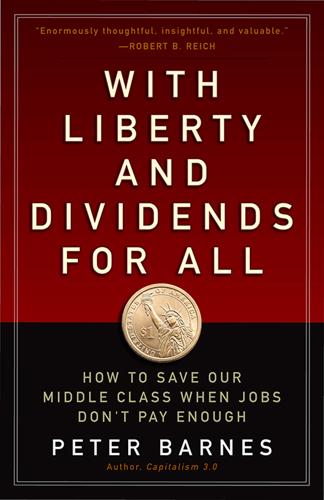
With Liberty and Dividends for All: How to Save Our Middle Class When Jobs Don't Pay Enough
by
Peter Barnes
Published 31 Jul 2014
But the book I started is finished and in your hands. IT’S IMPORTANT TO DISTINGUISH between economics and our economy. The terms are often conflated but refer to different things. Economics is a body of thought; our economy is a system that functions in the real world. As has been said in other contexts, the map is not the territory. Our economic system is real terrain, and economics is a picture of it, necessarily inaccurate and incomplete. Much has been written about the deficiencies of contemporary economics. I’m more concerned about the defects of our actual economy. But to understand those defects—and to fix them—we must start with a sufficiently wide lens, which is why conventional economics is a problem.
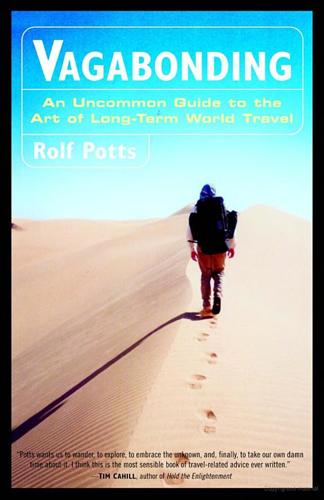
Vagabonding: An Uncommon Guide to the Art of Long-Term World Travel
by
Rolf Potts
Published 24 Dec 2002
Sure, expat cafés and card games have their place, but there’s more to it than just that, and a lot of the other stuff involves just diving into the unknown — accepting an invitation to a wedding in some small town where you don’t speak the language, or just wandering around the streets and alleys and talking to whomever strikes up a conversation with you, and so on. I kind of like spending a lot of time on my own, so it has been a challenge going out and doing stuff with local people. — TOM BOURGUIGON, 25, GRAPHIC DESIGNER, OHIO ———— The aphorism “The map is not the territory” looms ever larger as I get lost in the intricacies of a culture, giving up any hope of understanding, while love and appreciation between us grows. — ELDON HAINES, 70, NASA PLANETARY SCIENTIST, OREGON VAGABONDING PROFILE John Ledyard He saw that if anyone appeared insane it was not the island cannibals or the grease-encrusted Aleuts or the stony-hearted Tartars, but the one who visited them.

Yoga Nidra Meditation
by
Pierre Bonnasse
Published 22 Sep 2017
With regular training on a daily basis, the practices fall into place on their own, even at night. Everything is clear and luminous: a new flavor that changes life, our way of knowing ourselves, and of being. The philosophy is essentially practical. The knowing and the being are reunited in a harmonious, benevolent, and nourishing dance. The map is not the territory, but it allows us to move forward on the path, to lose ourselves then to find ourselves; it lets us be seized by what “is neither lost nor found.” I can relax without practicing yoga nidra, but I cannot practice yoga nidra without being relaxed just like in meditation. In wakefulness, the relaxation essentially operates on the level of the physical body and its tissues.
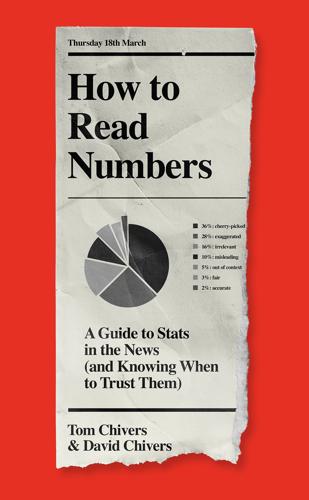
How to Read Numbers: A Guide to Statistics in the News (And Knowing When to Trust Them)
by
Tom Chivers
and
David Chivers
Published 18 Mar 2021
Whether that’s worth it depends on how much extra accuracy the new details provide. It might not be that much of an issue when you’re working with a silly model like ours, but when you’re dealing with dozens of variables in a much larger, more complicated model, the accuracy/simplicity trade-off becomes very real. As statisticians say, ‘The map is not the territory’: your satnav doesn’t have to tell you the colour of all the house doors to get you from A to B, but it does have to tell you where the road junctions are. Sometimes you’ll be happy to include the odd unrealistic assumption: many infectious-disease models (though not the Imperial College one), for instance, assume that everyone mixes at random.

Radical Uncertainty: Decision-Making for an Unknowable Future
by
Mervyn King
and
John Kay
Published 5 Mar 2020
And having asked where data come from, it is also important to ask what model is being used to interpret it. Remember the fate of the Literary Digest which predicted a landslide victory for Landon, not Roosevelt. Even now pollsters disagree about how to translate the raw data they collect into predictions of results. The map is not the territory Models can also be used to reproduce large – real – worlds. Engineers must have comprehensive and quantitative understanding of how aircraft and bridges will respond to changes in wind speed and shear. Bridges can literally be modelled by the construction of small-scale replicas, although the degree to which the properties of the model carry over to the bridge itself requires experience and judgement.
…
The paradox is demonstrated in the oft-told story, perhaps most eloquently described by the Argentinian writer Jorge Luis Borges, of the quest to create a perfect map of the world. 15 The search ends with a map which itself completely reproduces the world, and is therefore useless. A map, or a model, is necessarily a simplification, and the appropriate simplification is matched to a purpose – a walking map differs from a subway map or road atlas, even of the same area. ‘The map is not the territory’, in the famous words of the Polish philosopher Alfred Korzybski, and the same is true of models. 16 Nevertheless, some models successfully represent the essential features of the system which are needed for accurate prediction. And these representations are the basis of the scientific advance which followed the formulation of Newtonian mechanics.

WTF?: What's the Future and Why It's Up to Us
by
Tim O'Reilly
Published 9 Oct 2017
But making what we do now more productive is just the beginning. We must share the fruits of that productivity, and use them wisely. If we let machines put us out of work, it will be because of a failure of imagination and a lack of will to make a better future. PART I USING THE RIGHT MAPS The map is not the territory. —Alfred Korzybski 1 SEEING THE FUTURE IN THE PRESENT IN THE MEDIA, I’M OFTEN PEGGED AS A FUTURIST. I DON’T think of myself that way. I think of myself as a mapmaker. I draw a map of the present that makes it easier to see the possibilities of the future. Maps aren’t just representations of physical locations and routes.
…
It is essential to look through the labels—employee and independent contractor—and examine the underlying reality that they point to. So often, we live in the world of labels and associated value judgments and assumptions, and forget to reduce our intellectual equation to the common denominators. As Alfred Korzybski so memorably wrote, we must remember that “the map is not the territory.” When you put yourself into the mapmaker’s seat, rather than simply taking the existing map as an accurate reflection of an unchanging reality, you begin to see new possibilities. The rules that we follow as a society must be updated when the underlying conditions change. The distinction between employees and subcontractors doesn’t really make sense in the on-demand model, which requires subcontractor-like freedoms to workers who come and go at their own option, and where employee-based overtime rules would prohibit workers from maximizing their income.
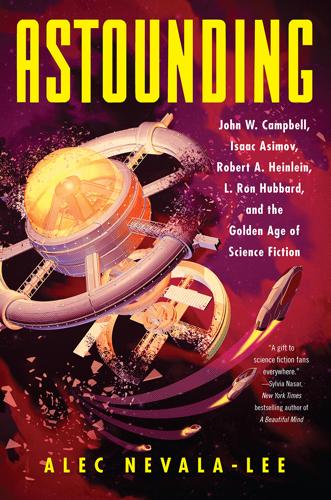
Astounding: John W. Campbell, Isaac Asimov, Robert A. Heinlein, L. Ron Hubbard, and the Golden Age of Science Fiction
by
Alec Nevala-Lee
Published 22 Oct 2018
Heinlein also became interested in General Semantics, a discipline developed by the Polish philosopher Alfred Korzybski. In his monumental book Science and Sanity, Korzybski warned against the fallacy of confusing words with their underlying objects, as expressed in the aphorism for which he would be best remembered: “The map is not the territory.” General Semantics was a mental engineering program that trained its users to avoid such mistakes, and Heinlein was particularly drawn to the concept of “time binding,” which stated that man was the one animal that could build on the abstractions created by previous generations—but only if it knew how.
…
Asimov, In Memory Yet Green, 245. “the worst science fiction writer unlynched” Ibid. “I wanted to make sure he remembered me” Knight, The Futurians, 116n. the only game fit for adults Patterson, Learning Curve, 194. “a grisly horror” RAH to Robert Bloch, March 18, 1949, quoted in Patterson, Learning Curve, 198. “The map is not the territory” The term first appeared in Korzybski’s paper “A Non-Aristotelian System and its Necessity for Rigor in Mathematics and Physics,” December 28, 1931. RAH and Leslyn met Korzybski in 1939. Patterson, Learning Curve, 236. “for plot twists and climaxes” Leslyn (Heinlein) Mocabee to Frederik Pohl, May 8, 1953.

They Have a Word for It A Lighthearted Lexicon of Untranslatable Words & Phrases-Sarabande Books (2000)
by
Howard Rheingold
Published 10 Mar 2020
Alexandra David-Neel, The Secret Oral Teachings in Tibetan Buddhist Sects Fishing baskets are employed to catch fish; but when the fish are got, the men forget the baskets; snares are employed to catch hares; but when the hares are got, men forget the snares. Words are employed to convey ideas; but when the ideas are grasped, men forget the words. ChuangTzu ~anguage is the road to God, but words are the tools of the Devil. The map is not the territory. Terms may be used, but none of them are absolute. Don't bite my finger, look at where I'm pointing! Language collides painfully with paradox when words are used to direct people to the realm of spiritual matters. Possibly more blood has been shed throughout the centuries over differing interpretations of holy scriptures than over all the mercantile or territorial dis- Spiritual Pathwords putes combined.
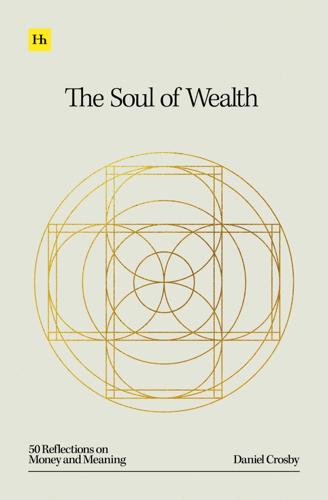
The Soul of Wealth
by
Daniel Crosby
Published 19 Sep 2024
The end of history illusion says that we can read journals from 20 years ago and readily articulate how little we have in common with that person, but it blinds us to the undeniable truth that our 20-years-from-now selves will be every bit as unrecognizable. What this requires of us financially is to balance preparation with flexibility, understanding that we need a plan to guide us and that the plan should be a living document that is amenable to growth and change. Alfred Korzybski put it well: “The map is not the territory.” The philosopher and scientist’s turn of phrase conveys that people tend to conflate models of reality with reality itself, then run into danger from their too-literal adherence to a ‘map’. The expression serves as a reminder that our mental constructs are often too restrictive and may not capture the richness and nuances of the present and future.

Designing Search: UX Strategies for Ecommerce Success
by
Greg Nudelman
and
Pabini Gabriel-Petit
Published 8 May 2011
Finally, it is important to note that, although this framework can be helpful and these five ecommerce search roles apply to most ecommerce projects, this generalized framework is not precise. For any framework to be maximally useful for a specific project, you should refine it through direct observation of customers and careful study of key performance metrics. As the prominent philosopher and the father of General Semantics Alfred Korzybski so eloquently stated, “The map is not the territory.” You can neither camp on the little triangles that represent mountains on a map nor go swimming in those blue patches of ink that represent lakes. Rather than viewing this role framework as “reality,” use it as you would a map—to help you navigate your ecommerce search design projects, and as the foundation for developing your own approach—subject to change as you get more data and gain a better understanding of the needs and behaviors of your customers.
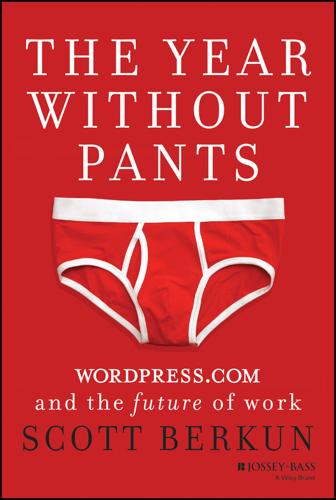
The Year Without Pants: Wordpress.com and the Future of Work
by
Scott Berkun
Published 9 Sep 2013
The prevailing attitude at Automattic was that any big project is simply a series of smaller ones, and I liked this. It avoids the stupid things that happen on projects by never allowing you to fall in love with your grand plans. As the joke goes, if you don't have a plan, then you never worry if your plan is wrong. And as the pithy saying goes, the map is not the territory. If you make an elaborate map, you forget the world may change for the worse while you're staring at your beautiful little map. People drive off cliffs and into lakes because their GPS device told them there was a road, but there wasn't. Without the GPS, that can't happen. In project terms, if you make only small maps, of, say, the next two weeks, you never run the risk of your map being very wrong, and you learn more from the present since it has your full attention.

Cogs and Monsters: What Economics Is, and What It Should Be
by
Diane Coyle
Published 11 Oct 2021
Economists value logic, parsimony, and elegance—sometimes more than reality—and like an academic paper to have some impressive algebra to express the logic. I have been asked by journal editors to insert some equations that say in algebra the same as the surrounding words. The linguistic philosopher Alfred Korzybski (1933) famously warned against believing too much in a model: ‘The map is not the territory.’ The aim in modelling should be finding a happy medium: between navigating around London only via Tube; and making the opposite error of piling on descriptive detail without any analytical abstraction in a kind of Borgesian paradox where the entire territory is the only possible map (Borges 1975 [1946]).
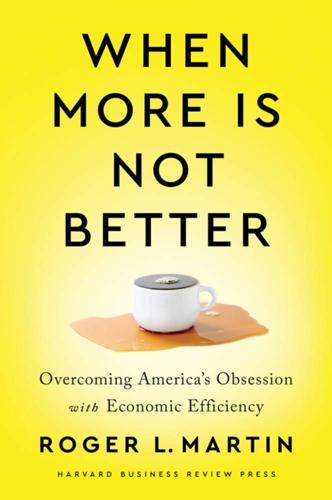
When More Is Not Better: Overcoming America's Obsession With Economic Efficiency
by
Roger L. Martin
Published 28 Sep 2020
The proxies that have come into standard use in the policy and business domains, proxies that have become indistinguishable in the minds of their users from the efficiency they are supposed to measure, have been converting the historically Gaussian, bell-shaped distribution of outcomes in the American economy into a differently shaped and problematic curve—known as a Pareto distribution—that threatens the future of democratic capitalism in America. The Problem with Proxies A model is but one representation of reality. As the saying goes, the map is not the territory. Because there is an infinite variety and amount of data in the territory—a tree here, a depression there, etc.—the map by necessity leaves some things out and highlights other things, usually determined by what we want to use the map to know. A topographical map will highlight natural terrain.
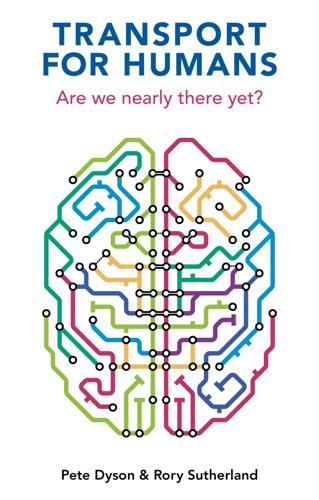
Transport for Humans: Are We Nearly There Yet?
by
Pete Dyson
and
Rory Sutherland
Published 15 Jan 2021
The study even found that the size was proportional to the time they had spent memorizing and navigating London’s roads.5 When we drive on unfamiliar roads, or walk in strange cities, or travel on the London Underground, we do not have the knowledge. We rely on designers to help us navigate. If they fail to do a good job, we end up squinting at confusing message boards, blaming ourselves because we missed a motorway junction, or spinning around in circles at the exit of a station. The map is not the territory The most fundamental piece of navigation design is the map. Yet maps are always simplifications. Like the mental models they help construct, they distort space, prioritize certain features and leave others out. The question is not, what is most topographically accurate? The question is, how would you like your perception to be manipulated?
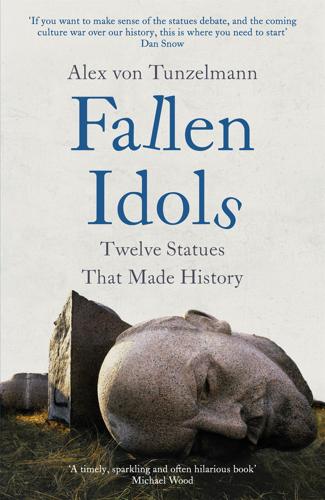
Fallen Idols: Twelve Statues That Made History
by
Alex von Tunzelmann
Published 7 Jul 2021
While we historians generally try not to make things up, in attempting to ‘make some kind of sense of people’s oftentimes senseless actions’, as Professor Wagner describes it, we are still telling a story. In telling any story, in making any kind of selection of which historical facts to include or exclude, you inevitably impose a shape on facts and events – and that shape may be deceptive. The scientist and philosopher Alfred Korzybski remarked that ‘the map is not the territory’. Any written history, even the blandest series of historical documents, can only ever be a map, not the actual territory of history, which vanishes as soon as it has happened. History is gone. What we have is the memory of history, and that is always contested. This is why I am interested in statues, and why I think their construction and destruction is so important to many people.

The Hidden Half: How the World Conceals Its Secrets
by
Michael Blastland
Published 3 Apr 2019
I simply suspect over confidence, especially in the form that modelled outputs reach the public, where they tend to lack recognition of the uncertainties. Those interested in a critical approach to these questions could do a lot worse than begin with John Kay’s essay on modelling in economics: ‘The Map is Not the Territory’, available on his website: johnkay.com. 4 Tom Gash, Criminal: The Truth About Why People Do Bad Things, London, Allen Lane, 2016: an excellent book; clear, thoughtful and readable. 5 See also Pat Mayhew, Ronald V. Clarke and David Elliott, ‘Motorcycle Theft, Helmet Legislation and Displacement’, Howard Journal of Crime and Justice, vol. 28, no. 1, 1989. 6 These criticisms are marshalled (and referenced) in an impressive book against current research methods: Raymond Hubbard, Corrupt Research – The Case for Reconceptualizing Empirical Management and Social Science, London, Sage, 2015. 7 Duncan J.
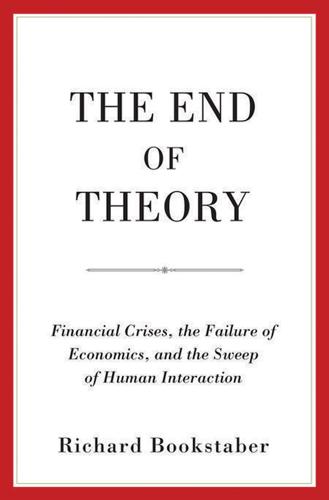
The End of Theory: Financial Crises, the Failure of Economics, and the Sweep of Human Interaction
by
Richard Bookstaber
Published 1 May 2017
Elementary Lessons in Logic: Deductive and Inductive with Copious Questions and Examples, and a Vocabulary of Logical Terms. New York: Macmillan. Jevons, William Stanley, and H. S. Foxwell. 1884. Investigations in Currency and Finance. London: Macmillan. Kahneman, Daniel. 2011. Thinking, Fast and Slow. New York: Farrar, Straus and Giroux. Kay, John. 2012. “The Map Is Not the Territory: Models, Scientists, and the State of Macroeconomics.” Critical Review 24, no. 1: 87–99. http://dx.doi.org/10.1080/08913811.2012.684476. Keynes, John Maynard. 1936. The General Theory of Employment, Interest, and Money. London: Harcourt Brace Jovanovich. ———. 1937. “The General Theory of Employment.”
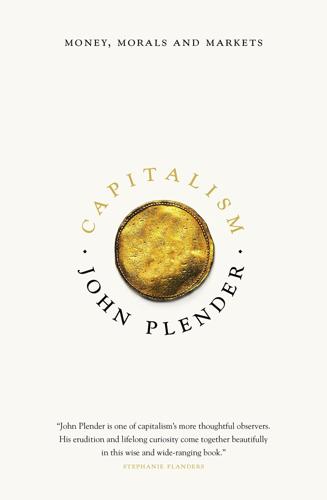
Capitalism: Money, Morals and Markets
by
John Plender
Published 27 Jul 2015
I did not, of course, accurately predict the timing of the bursting of the bubble. 88 ‘Expectations of Returns and Expected Returns’, 2012, http://www.hbs.edu/faculty/ Publication%20Files/expectedreturns20121020_00760bc1-693c-4b4f-b635-ded0e540e78c.pdf 89 Ibid. 90 http://www.economist.com/node/14165405 91 http://www.johnkay.com/2011/10/04/the-map-is-not-the-territory-an-essay-on-thestate-of-economics 92 Speech to the annual conference of the Institute for New Economic Thinking, quoted by Anatole Kaletsky in the International New York Times, April 2014. 93 Stabilizing an Unstable Economy, Yale University Press, 1986. 94 The Time of My Life, Penguin Books, 1990. 95 The trade-to-GDP ratio is the economy’s total trade of goods and services (exports plus imports) divided by GDP. 96 Politics, Book 7, Part 9, http://classics.mit.edu/Aristotle/politics.7.seven.html 97 http://classics.mit.edu/Plato/laws.html 98 Quote from Jerry Z.

Street Smart: The Rise of Cities and the Fall of Cars
by
Samuel I. Schwartz
Published 17 Aug 2015
This isn’t quite as big a con job as a mentalist who has confederates checking out marks before a performance, but neither is it a system that can be scaled up for real-world use. Remember: we’re talking not just roads, but driveways, parking lots, ferry terminals, and basically anywhere a car can already travel. Then there’s the uncomfortable reality that the map is not the territory. No matter how frequently it is updated, no mapping software can keep up with every new lane marking, or pothole, or construction site, or utility truck blocking a road. As I write this, most street markings in the Northeast are covered by snow and ice, and snow banks often require driving illegally into lanes reserved for oncoming traffic.

Exploring the World of Lucid Dreaming
by
Stephen Laberge, Phd
and
Howard Rheingold
Published 8 Feb 2015
From Chapter 5, you should remember that the dream state and waking state both use the same perceptual process to arrive at mental representations or models of the world. These models, whether of the dream or physical world, are only models. As such they are illusions, not the things they are representing, just as the map is not the territory, and the menu is not the meal. The Great Realization: It Is All a Dream “The final step leads to the Great Realization, that nothing within the sangsara [phenomenal world of space and time] is or can be other than unreal like dreams.”15 If we compare the mind to a television set, the Great Realization is understanding that nothing that appears on the screen can be anything other than an image, or an illusion.

The Rationalist's Guide to the Galaxy: Superintelligent AI and the Geeks Who Are Trying to Save Humanity's Future
by
Tom Chivers
Published 12 Jun 2019
There are two fundamental ideas underpinning ‘rationality’ as defined by the Rationalists. They are ‘epistemic rationality’ and ‘instrumental rationality’. ‘Epistemic rationality’ is achieving true beliefs. Or, as Yudkowsky puts it, ‘systematically improving the accuracy of your beliefs’.1 The Rationalists have a phrase for this: ‘The map is not the territory.’ Your mind contains thousands of models, which it uses to predict reality. For instance, I have a working model of gravity and air resistance and things which allows me (sometimes) to catch a ball that is thrown to me. Even more prosaically, I have a model which says, ‘The lamp is over there’ and ‘The door is behind me’ and ‘The window is in front of me.’
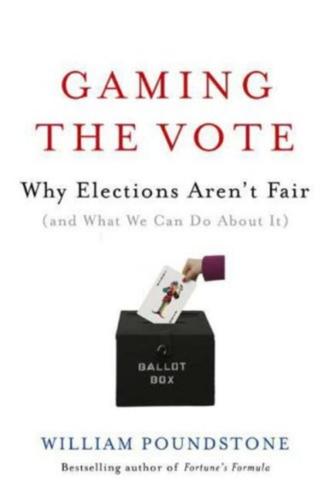
Gaming the Vote: Why Elections Aren't Fair (And What We Can Do About It)
by
William Poundstone
Published 5 Feb 2008
The many different ways of designing ballots and tallying votes can be thought of as competing road maps of the same region. Though different in superficial ways, all show the same tenitory. Because of that, it shouldn't matter which map (voting system) we use. All are going to get us where we need to go. We all know that the map is not the territory. What if there were no territory--only maps? Arrow's theorem says that there are situations where the "will of the people" is ill-defined, where rational people are collectively irrational. A decisive voting system will come up with a winner, but that winner may differ from the winner decided under another voting system that also sounds fair and reasonable.
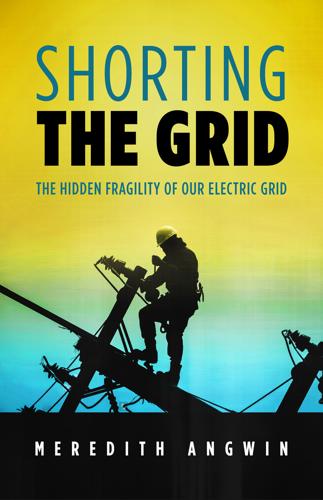
Shorting the Grid: The Hidden Fragility of Our Electric Grid
by
Meredith. Angwin
Published 18 Oct 2020
CHAPTER 20 POLLYANNA SCENARIOS ON THE GRID Everything is rosy with misplaced concreteness ONE OF THE WAYS that the Synapse Report achieves happy outcomes is with misplaced concreteness. There’s a name for taking-targets-as-actual-reality. In logic, it is called the “fallacy of misplaced concreteness” or “reification.” A more common description for this fallacy is sometimes stated as “the map is not the territory.” We will see this fallacy in action in several sections of the Synapse Report. Misplaced concreteness for renewables The Synapse Report claims the original ISO-NE report underestimates the amount of renewables that will be available to the grid. Synapse notes that state clean-energy laws require much more renewable energy than ISO-NE uses in its predictions.
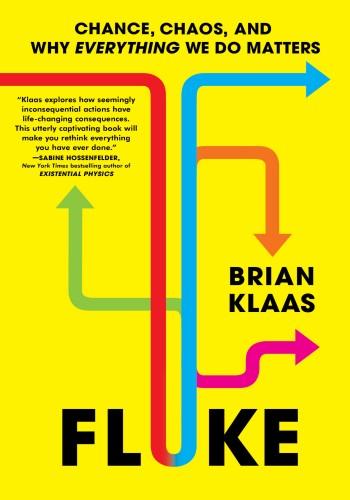
Fluke: Chance, Chaos, and Why Everything We Do Matters
by
Brian Klaas
Published 23 Jan 2024
Much of our world now runs on complex models that few of us understand. The problem, however, is that the models have become so influential that we can forget that they are models—deliberate simplifications that are, by design, inaccurate representations of the thing itself, just as a map helps us navigate a territory. But the map is not the territory. There are trade-offs to using models. As the French poet Paul Valéry put it rather succinctly, “Everything simple is false. Everything which is complex is unusable.” Nobody wants a map with a 1:1 scale. We run into trouble when we conflate map and territory, mistaking representation for reality.
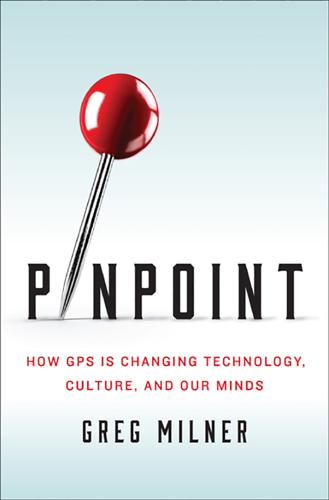
Pinpoint: How GPS Is Changing Our World
by
Greg Milner
Published 4 May 2016
Science produces “a map and a picture of reality,” nothing more or less. “If it were to present reality in its whole concreteness,” Tolman wrote in 1932, “science would not be a map but a complete replica of reality. And then it would lose its usefulness.” Perhaps Tolman was influenced by Alfred Korzybski’s dictum, issued a year earlier: “The map is not the territory.” Even the most comprehensive cognitive map is not the world, which is always mediated by our perceptions of it. There is no escaping the maze. Beginning in the early 1970s, Tolman’s cognitive map concept experienced a renaissance, adopted by experimental and developmental psychologists, geographers, urban planners, architects, and anyone interested in wayfinding.
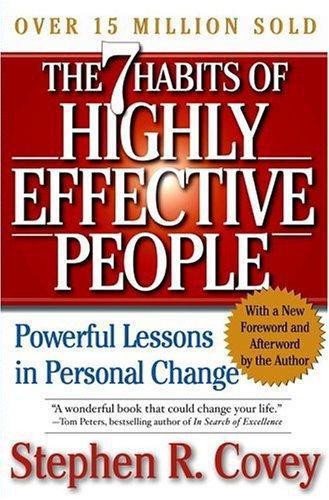
The 7 Habits of Highly Effective People: Powerful Lessons in Personal Change
by
Stephen R. Covey
Published 9 Nov 2004
It was originally a scientific term, and is more commonly used today to mean a model, theory, perception, assumption, or frame of reference. In the more general sense, it's the way we "see" the world - not in terms of our visual sense of sight, but in terms of perceiving, understanding, interpreting. For our purposes, a simple way to understand paradigms is to see them as maps. We all know that "the map is not the territory." A map is simply an explanation of certain aspects of the territory. That's exactly what a paradigm is. It is a theory, an explanation, or model of something else. Suppose you wanted to arrive at a specific location in central Chicago. A street map of the city would be a great help to you in reaching your destination.
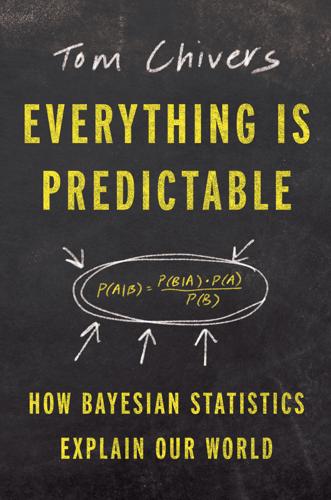
Everything Is Predictable: How Bayesian Statistics Explain Our World
by
Tom Chivers
Published 6 May 2024
That doesn’t mean that science can’t know anything, or that it’s all perfectly postmodern. It just means that, once again, we’re building models of the world, and trying our best to check them against the real world: making predictions and updating them with new information, trying to minimize prediction error. We have a mental map, and the map is not the territory, but the territory exists, and if the map is wrong it will send us to the wrong places. In fact, a Bayesian model like this seems a neat way of thinking about science. Philosophers of science get bogged down with epistemology. We can’t know anything for certain; we might be being deceived by an evil demon, we might be a brain in a jar.
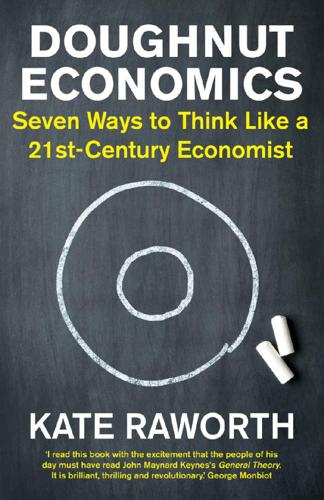
Doughnut Economics: Seven Ways to Think Like a 21st-Century Economist
by
Kate Raworth
Published 22 Mar 2017
Coming up with his groundbreaking theory in the 1930s was, he admitted, ‘a struggle of escape from habitual modes of thought and expression … The difficulty lies not in the new ideas, but in the old ones which ramify, for those of us brought up as most of us have been, into every corner of our minds.’38 The possibility of shaking off old mental models is enticing, but the quest for new ones comes with caveats. First, always remember that ‘the map is not the territory’, as the philosopher Alfred Korzybski put it: every model can only ever be a model, a necessary simplification of the world, and one that should never be mistaken for the real thing. Second, there is no correct pre-analytic vision, true paradigm or perfect frame out there to be discovered.
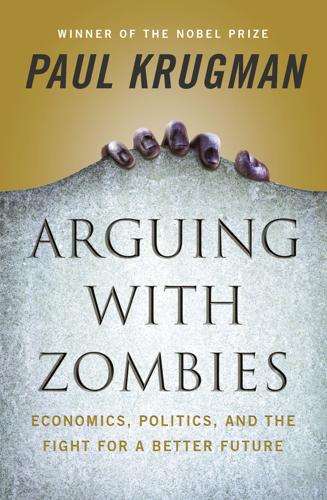
Arguing With Zombies: Economics, Politics, and the Fight for a Better Future
by
Paul Krugman
Published 28 Jan 2020
For it requires some strategic inconsistency in how you think about the economy. When you’re doing micro, you assume rational individuals and rapidly clearing markets; when you’re doing macro, frictions and ad hoc behavioral assumptions are essential. So what? Inconsistency in the pursuit of useful guidance is no vice. The map is not the territory, and it’s O.K. to use different kinds of maps depending on what you’re trying to accomplish: if you’re driving, a road map suffices, if you’re going hiking, you really need a topo. But economists were bound to push at the dividing line between micro and macro—which in practice has meant trying to make macro more like micro, basing more and more of it on optimization and market-clearing.
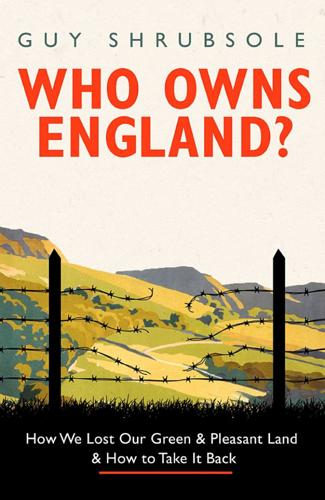
Who Owns England?: How We Lost Our Green and Pleasant Land, and How to Take It Back
by
Guy Shrubsole
Published 1 May 2019
It could act as a kind of Hippocratic oath for all property owners, prompting them to live up to the public image of landowners as wise stewards of the earth: whoever owns this land shall leave it in a better state than they found it. 10 AN AGENDA FOR ENGLISH LAND REFORM So, who owns England? And what do we do about it? I started out thinking it might be possible to map England’s landowners as one puts together a jigsaw, one piece at a time. This book has recounted some of that effort: the endless information requests, the geeky analysis of data, the building of maps. But the map is not the territory. I soon realised that a proper understanding of land ownership in this country can only really come by walking through it; seeing the invisible lines of power within the landscape made corporeal through fences and walls and barbed wire. Trespassing across England, I started to appreciate how the control of land affects the psyche: that feeling of hollowness standing outside an empty mansion; the disgust, as I picked my way over the rubbish lining the Thames next to a company’s leaking landfill site; the sense of wonder gazing at butterflies and orchids thriving in a protected nature reserve.
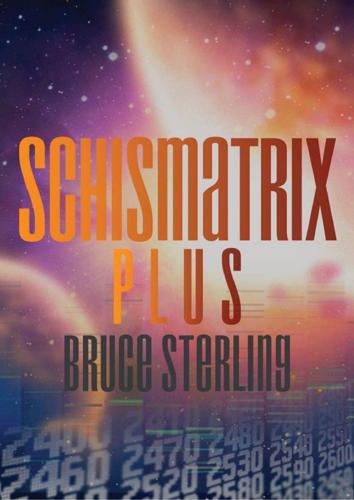
Schismatrix Plus
by
Bruce Sterling
Published 1 Jan 1995
Nikolai was on leave in the Ring Council with two men from his unit. They were drinking in a free-fall bar called the ECLECTIC EPILEPTIC. The first man was Simon Afriel, a charming, ambitious young Shaper of the old school. The other man had a Mechanist eye implant. His loyalty was suspect. The three of them were discussing semantics. “The map is not the territory,” Afriel said. Suddenly the second man picked an almost invisible listening device from the edge of the table. “And the tap is not meritorious,” he quipped. They never saw him again. … A Mechanist pirate, malfunctioning, betraying gene-lines. Invisible listening devices buy, grow, and sell you.

Your Computer Is on Fire
by
Thomas S. Mullaney
,
Benjamin Peters
,
Mar Hicks
and
Kavita Philip
Published 9 Mar 2021
“People—Algorithmic Fairness and Opacity Working Group,” accessed August 1, 2018, http://afog.berkeley.edu/people/. 47. “AI Now Institute,” accessed August 1, 2018, https://ainowinstitute.org/. 48. Alex Campolo et al., “AI Now 2017 Report” (AI Now, 2017), https://ainowinstitute.org/AI_Now_2017_Report.pdf. 3 A Network Is Not a Network Benjamin Peters The map is not the territory. —Polish American philosopher Alfred Korzybski Introduction Computer networks cannot save us—nor can we save them. Often, network designers and users do not even know what networks are: a network is not what we think of as a network. A network is not its map. “It’s not that we didn’t think about security,” admitted internet pioneer David D.
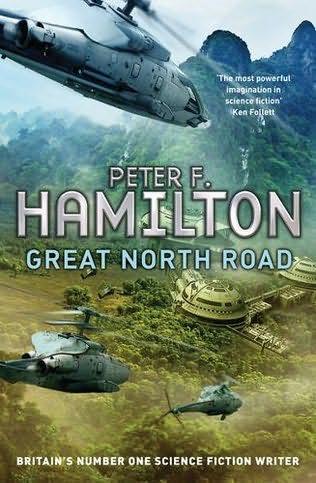
Great North Road
by
Peter F. Hamilton
Published 26 Sep 2012
Those HDA shits still haven’t paid us a single eurofranc. And I’ve got you spending money like a New Monaco parasite.” “Parasites don’t produce anything useful.” “All right, enough with the fucking gloating. What did you find yesterday after you walked out on your team? And it better be good.” “The map is not the territory.” “What?” “They outsmarted me. That’s what happened. They know our procedures, the gangs always have. And they were ready for us. Look, you’ve just murdered a North—a North for fuck’s sake!—and you know that’s going to bring a universe of turds tumbling down on you, since the resources the police are going to devote to the case will be phenomenal.
…
“That was a real phoenix flight you pulled off this morning,” Aldred said in the lift on the way to the sixth floor. Having him along made Sid feel a whole lot safer. “A phoenix?” “Rising out of the ashes.” “I told you he was the man,” O’Rouke said. “Right back at the start. I said our Sid would crack this for you.” “I do remember,” Aldred said. “But nonetheless, that was impressive.” “The map is not the territory,” Sid explained. “That’s what I tell all my detectives on their orientation day,” O’Rouke said. “Set them straight, get their heads screwed on right to begin with.” “We rely too much on data analysis,” Sid said, brave enough to ignore the chief constable. “We don’t get our hands dirty anymore.

New Market Wizards: Conversations With America's Top Traders
by
Jack D. Schwager
Published 28 Jan 1994
Whether these pictures begin as fuzzy or clear, they can be built up into great motivating visions. Inner voices can criticize us or they can encourage and guide us. Any feeling we’ve had in our lives—confidence, challenge, indomitable will, whatever it is—even if we’ve only had it once, can be transferred to any situation in our lives where we want or need it. When you say, “The map is not the territory,” do you mean that people have distorted views of reality that lead them astray? NLP believes that all maps (mental and physical) are a distorted, or selected, view of reality. A topographical map, a street map, and a weather map all provide different views of the same territory and all are true representations.

The Alignment Problem: Machine Learning and Human Values
by
Brian Christian
Published 5 Oct 2020
No one trying to reproduce the paper’s results ever would reach the same level of accuracy as the original researchers, at least not with that training data. The model trained on 2016 data was slowly bleeding out its accuracy as the world moved on.36 Taken together, we have a litany of reminders that “the map is not the territory.” As Bruno Latour writes, “We have taken science for realist painting, imagining that it made an exact copy of the world. The sciences do something else entirely—paintings too, for that matter. Through successive stages they link us to an aligned, transformed, constructed world.”37 Aligned—if we are fortunate, and very careful, and very wise.